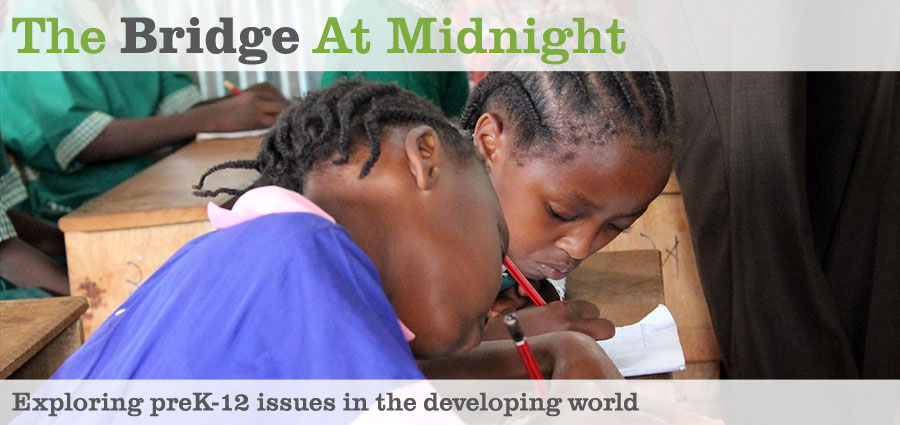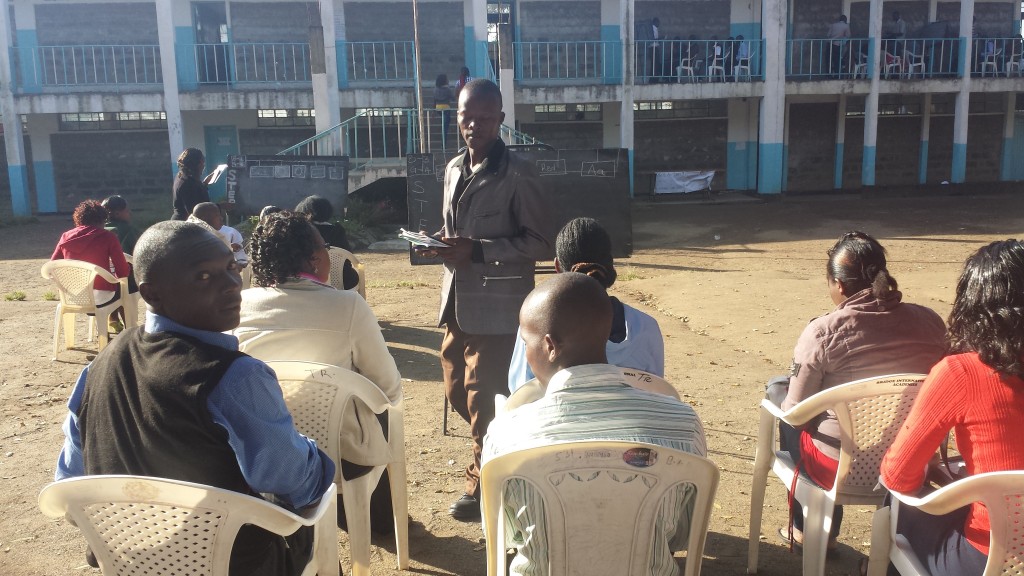Day 3 in Nakuru
Posted: December 26th, 2013 | Author: Michael Goldstein | | No Comments »
Are we succeeding? A challenge in schools: answering that question takes time. You need data to measure student progress. That data needs to accrue over time.
Before that, you’re left with impressions. Typically there are 3 scenarios for a teacher training.
1. It’s going badly. Everything is a mess. Teachers are annoyed, or confused, or indifferent.
2. It’s seemingly going well….but later we learn it didn’t help students or teachers. Seeming gains were ephemeral.
3. It’s seemingly going well…and later we learn kids did learn a lot more, and teachers are succeeding!
I suppose a theoretical option is “Training seems to be going badly, yet later we learn they’ve improved a lot.”
I’ve just never seen that in my career.
Josh left Nakuru feeling like we’re either in Situation #2 and #3. We’ll revisit this question in January and find out which one. For now, avoiding #1 sounds like a small victory, but you have no idea how much effort it takes. Josh writes:
When, years from now, your children ask you how we “won January,” you might tell them that it was the amazing retraining sessions that Greg and others created in the early weeks of December. Or Jared’s countless calls and e-mails to Sanjay in India and Brenda in Nairobi. Or Alex’s late nights finishing those common pages. Or Aungar’s parent letters, or Hannah’s calls to teachers, or Sean’s coordination of all the moving pieces.
But you might also tell them that Kayt won January last night, when she organized a talent show under the stars, complete with music and christmas lights, for almost 1,000 AMs and teachers at retraining.
And then, when it became clear that the nyama choma dinner (“barbecued meat” in Kiswahili) would not be ready after the talent show, it was Kayt who grabbed me and started dancing, and prompted a spontaneous dance party. Alex joined in, and we danced to Kenyan music under the stars.
One more detail about last night–just because I can’t resist. Kayt coordinated buying a cake from a local supermarket, to be given to the talent show winner. It was to have “Bridge Talent Show” winner written on it, with the Bridge logo.
Alas, when the cake was picked up, the wrong one was taken. So the actual winners of the talent show ended up with a pink heart shaped cake that said “Congratulations to Nancy on her Golden Jubilee.”
Nancy may not have won last night. But thanks to Kayt, I think we may have.
I asked Josh to compare how Bridge training went compared to others he’d experienced in the USA.
He replied:
Here’s my take, based upon my experience at
1) TFA institute,
2) ongoing TFA trainings (some of which I led),
3) Boston University School of Ed, and
4) professional development sessions at Boston Collegiate Charter School:a. Kenyan teachers are far more bought in to our trainings than would occur in the US. People are authentically interested (if occasionally skeptical), and are ready to be convinced by a coherent argument about why to do stuff in a certain way.
My sense is, this is rarely true in the USA. Why? Some combination of discomfort with change, built-in teacher beliefs that are hard to shake, and general boredom/disinterest with PDs, particularly those involving large numbers of powerpoint slides. Our Bridge teachers, by contrast, patiently sit through long, proscriptive powerpoint without much complaint.
Alex believes some of our teachers see the living conditions at training, and the opportunity to attend a PD session, as a wonderful and cool opportunity, almost akin to an expenses-paid, interesting adventure.
b. When our trainings are really effective–when they have video, simulations, engaging ideas, opportunities for practice and questions–the payoffs are immediately visible. This may not be true in USA PD sessions.
My sense is that the average day of Bridge training has payoffs for our teachers (and thus our kids) that easily BEAT the typical day of PD I experienced in USA. Does 1 day of PD at TFA or a good charter really result in noticeably different classrooms the next day? Almost always, no, and I think TFA would be first to say that. But at Bridge, I think the answer is yes.
c. One last observation: What really works in our training sessions–clear objectives, use of video and practice, all that good stuff–is the same stuff that works in the US. Jokes are great. Convincing examples are great. Practice is great. Long boring PPTs are much less so, even if our teachers aren’t actively rebelling when they sit through them (they actually take notes and try hard pretty much all the time).
I asked Josh about practice quality. I.e., let’s make up levels just to have a vocabulary.
Level 1 for any practice session is just getting people “reasonably trying” (rather than just thinking it’s a waste of time, and therefore just going through the motions). In my mind, Level 1 is a credit to all involved if we’re already hitting that.
Level 2 is a step up, where it’s not just reasonable effort, but valuable effort, particularly because there is a decent feedback loop.
Level 3 which is rarely achieved in the USA — practice that is top notch because there is very high quality feedback that is directive, precise, “do it again” type stuff. What you’d expect from a top college sports coach, and something that few teachers in USA describe ever getting.
Josh replied:
Mike,
We’ve definitely hit level 1. Teachers excited to try out new moves, and execute them to the best of their abilities. By contrast, I feel like USA trainings rarely hit this level (at least the small quantity I’ve seen).
We do frequently hit level 2. All groups execute and then do a quick debrief as a part of this setup. And about half of those groups are able to provide truly meaningful feedback. Feedback is a mix: less useful stuff (“you did not write the date correctly on the board; you pronounced X word wrong); modestly useful stuff (“you only took 30 seconds on the ‘help walk,’ you should have taken 2 minutes;” or “you didn’t monitor for behavior well, because I was able to get away with not working when I pretended to be a pupil”); and highly thoughtful stuff (“when you circulate, you should position your body so that you can help one pupil and still see the class. If your back is to many in the class when you help one person, the pupils behind you might misbehave”).
Level 3 is tough. I’d say we only get there when Brittney or a facilitator or a curriculum director watches a group and provides immediate critique, and then gets the teacher to try again.
But I’m heartened by the very smart comments that many teachers make organically, and also that our facilitators are pretty good at giving high quality redirection and at expecting the teachers to try again.
Our facilitators have teaching background and they managed with only 1 day of training about the “new stuff” to internalize and articulate, for the benefit of Bridge teachers (and with exceptional nuance), the details of our curriculum vision.
The facilitators are a great Bridge asset. Smart teachers with good instincts and an eye for detail.



Leave a Reply